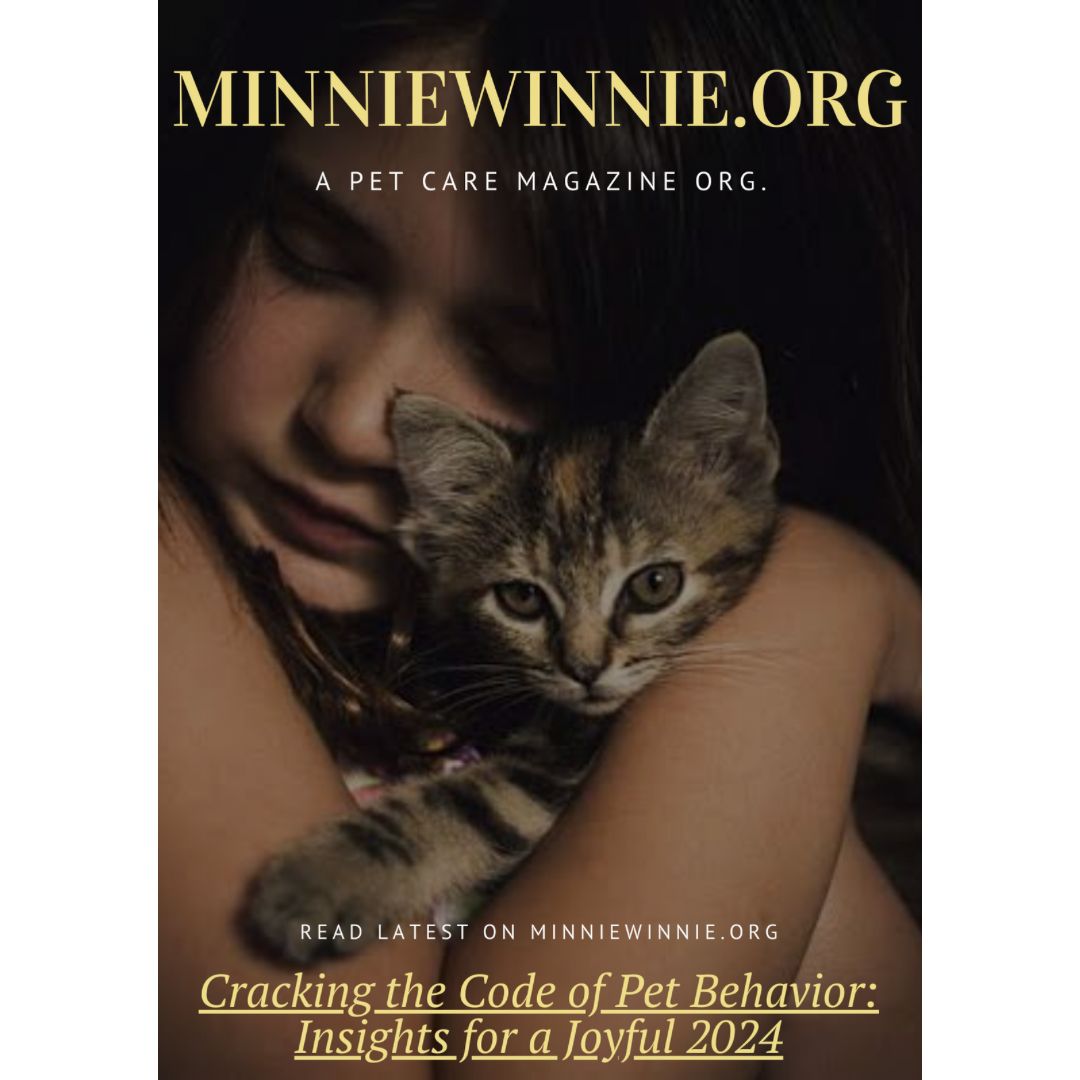Cracking the Code of Pet Behavior: Insights for a Joyful 2024
Understanding your pet’s behavior is key to fostering a joyful and harmonious relationship with them. As we move into 2024, new insights and approaches in pet behavior can help you decode what your furry friends are trying to communicate. Whether you’re a first-time pet owner or an experienced one, these insights can enhance your bond and ensure a happier life for both you and your pet.
1. The Language of Body and Tail
Pets, especially dogs and cats, communicate significantly through body language. Recognizing the nuances in their posture, tail movements, and ear positions can offer valuable clues about their feelings. For example, a wagging tail in dogs can indicate excitement, but the speed and direction of the wag can provide more context—slow, broad wags typically mean contentment, while rapid, tense wags can signal agitation. In cats, a flicking tail can denote irritation, while a slow, gentle swish may indicate curiosity.
2. Vocalization: Beyond the Bark and Meow
Pets use vocalizations to express a variety of emotions and needs. Decoding these sounds can greatly enhance communication. Dogs bark for different reasons: a high-pitched bark might indicate excitement or a greeting, while a low-pitched bark can be a warning. Cats meow in various pitches and tones to convey hunger, affection, or even distress. Paying attention to the context in which these sounds occur can help you respond appropriately to their needs.
3. Behavioral Patterns and Routines
Pets thrive on routine and can exhibit changes in behavior if there are disruptions. Recognizing patterns in their daily activities, such as eating, sleeping, and playing, can help you spot when something is off. Sudden changes in these routines might indicate stress, illness, or discomfort. For instance, if your normally active dog becomes lethargic, it could be a sign of underlying health issues that need veterinary attention.
4. Environmental Enrichment and Mental Stimulation
Boredom can lead to destructive behavior in pets. Providing environmental enrichment through toys, puzzles, and interactive games is crucial for their mental well-being. Cats benefit from scratching posts, climbing structures, and interactive toys that stimulate their hunting instincts. Dogs enjoy puzzle feeders, agility courses, and games that challenge their problem-solving skills. Regular mental stimulation helps prevent behavioral issues and keeps pets engaged and happy.
5. Positive Reinforcement Training
Training your pet using positive reinforcement techniques can build trust and encourage good behavior. Rewarding desired behaviors with treats, praise, or playtime reinforces those actions. For instance, training your dog to sit or stay using treats as rewards helps them associate the command with a positive outcome. This method is effective and fosters a strong, trusting relationship between you and your pet.
6. Understanding Stress Signals
Pets often exhibit subtle signs of stress that can be easily overlooked. Recognizing these signals can prevent escalation into more serious behavioral problems. Dogs might show stress through panting, pacing, or excessive licking. Cats may hide, become overly aggressive, or groom excessively. Identifying and addressing the sources of stress—whether it’s a new environment, loud noises, or changes in household dynamics—can help alleviate their anxiety.
7. Nutrition and Health
A pet’s behavior is closely linked to their overall health and nutrition. Ensuring they have a balanced diet and regular health check-ups is fundamental. Poor nutrition can lead to lethargy, irritability, or hyperactivity. Work with your veterinarian to determine the best diet for your pet’s specific needs, and monitor for any changes in behavior that might indicate health issues.
8. Socialization and Interaction
Socialization is essential for pets to develop well-adjusted behavior. Early and ongoing socialization helps pets become comfortable with different people, animals, and environments. Regular interaction and playtime with you and other pets can prevent behavioral issues like aggression or fearfulness. Dogs benefit from playdates and dog parks, while cats might enjoy controlled interactions with other friendly pets or humans.
Conclusion
Cracking the code of pet behavior involves keen observation, understanding, and proactive engagement. By paying attention to your pet’s body language, vocalizations, routines, and environmental needs, you can foster a deeper connection and ensure their well-being. Utilizing positive reinforcement, recognizing stress signals, maintaining good health, and ensuring proper socialization are all vital components in creating a joyful life for your pet in 2024. Embrace these insights, and you’ll be well on your way to a harmonious and fulfilling relationship with your furry companion.










